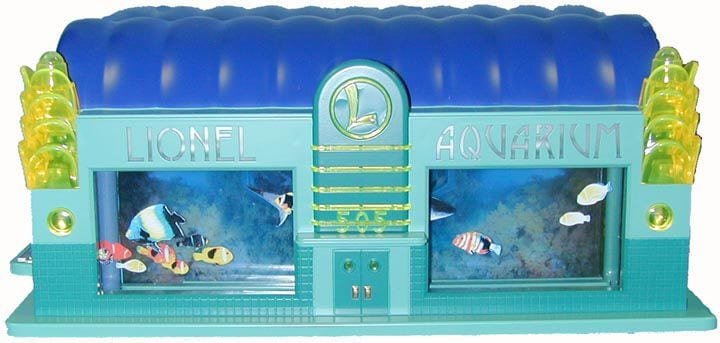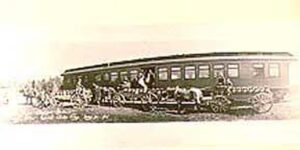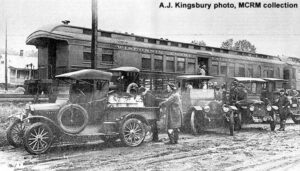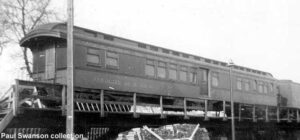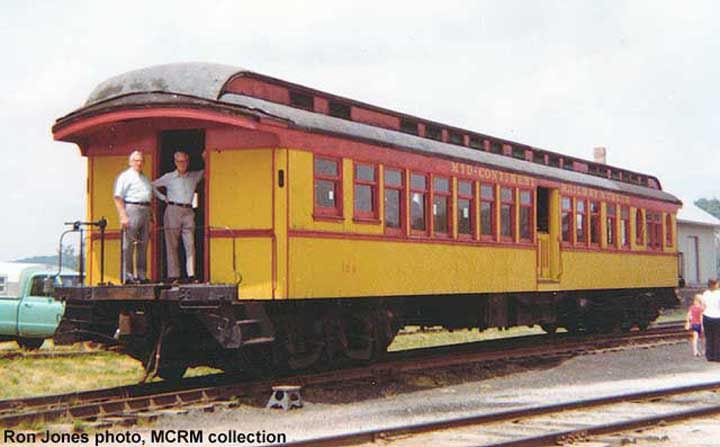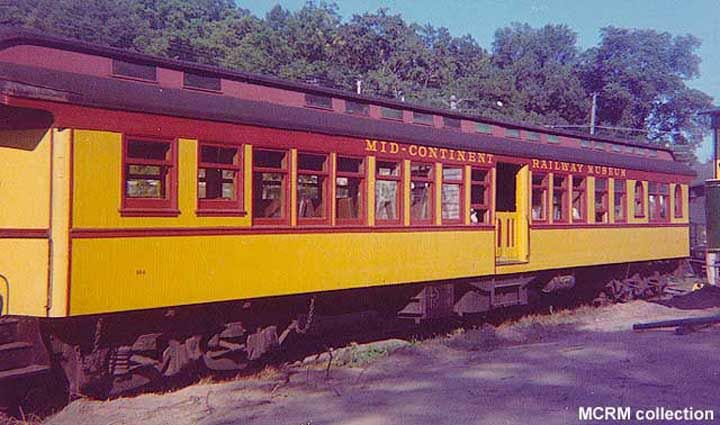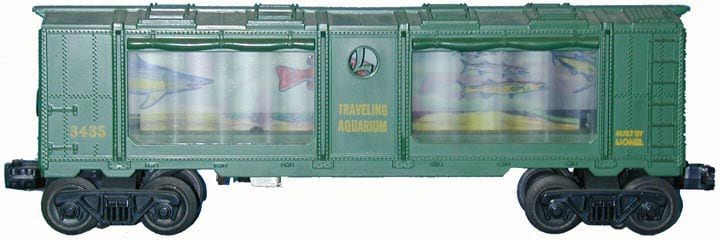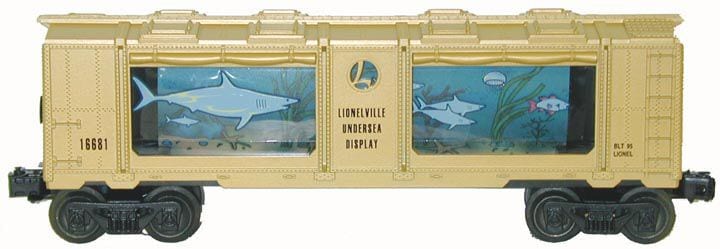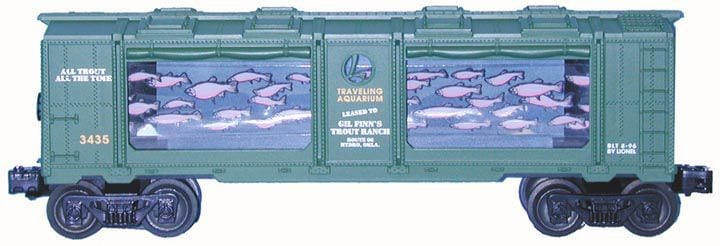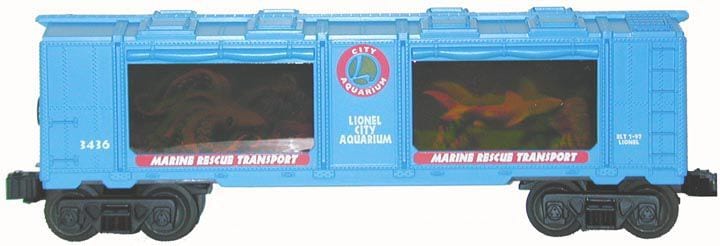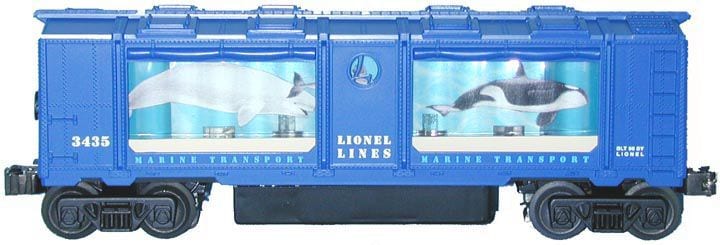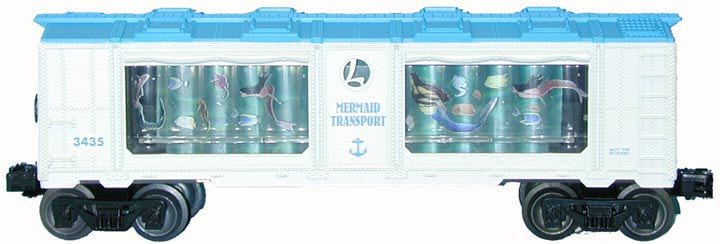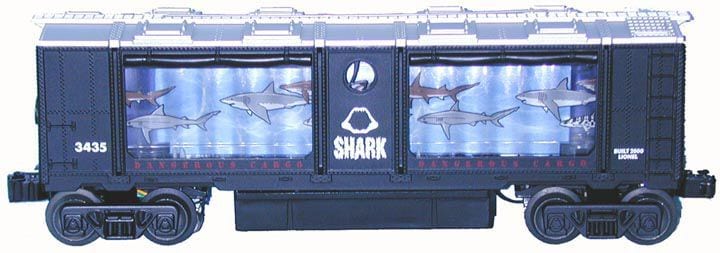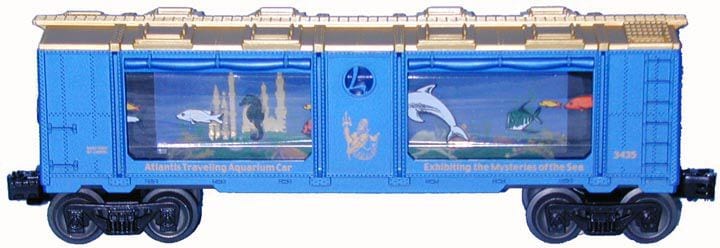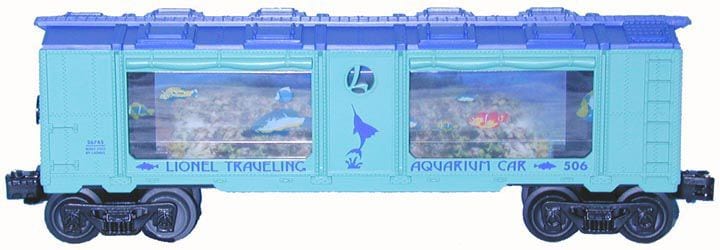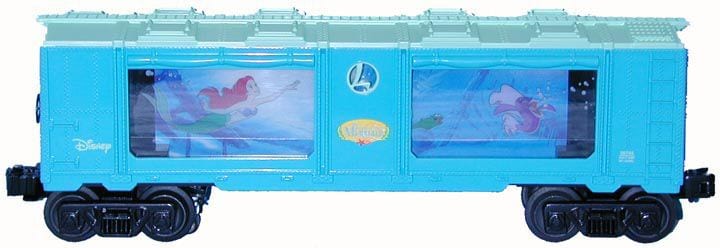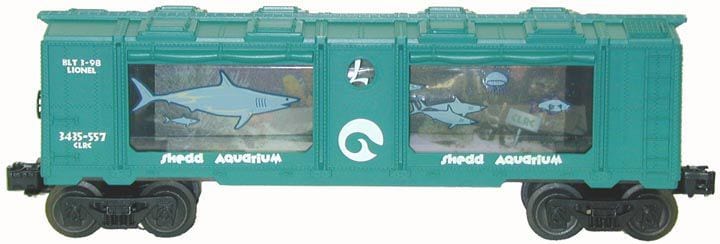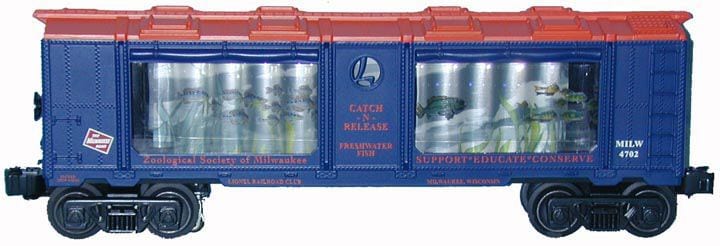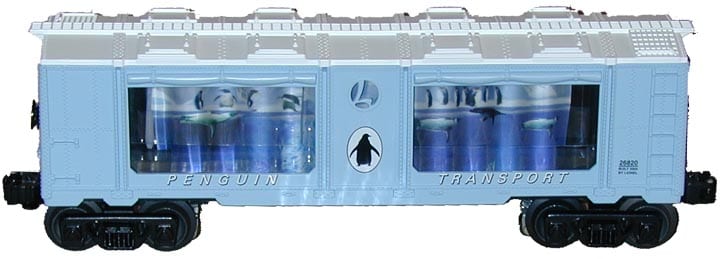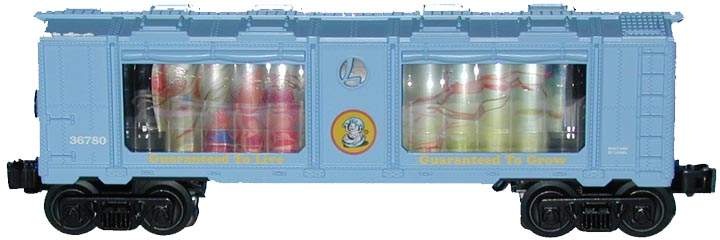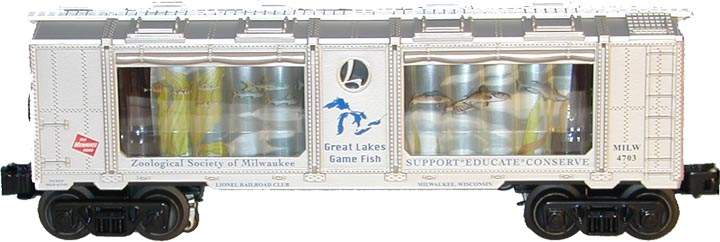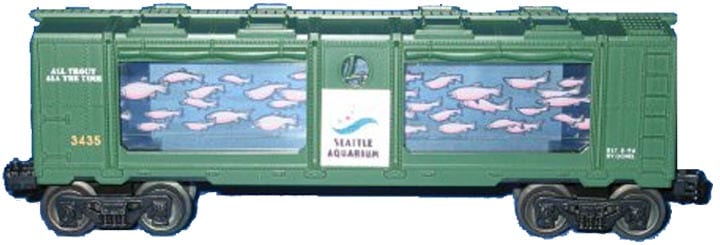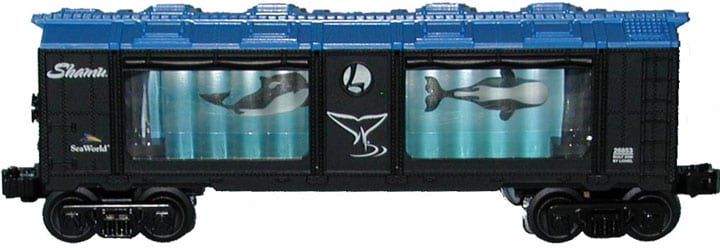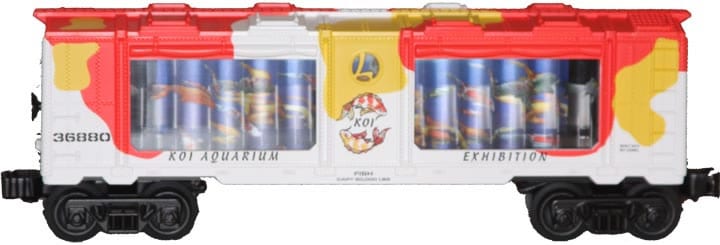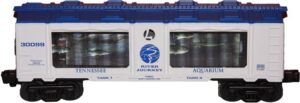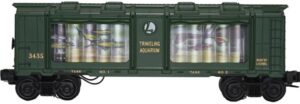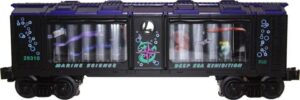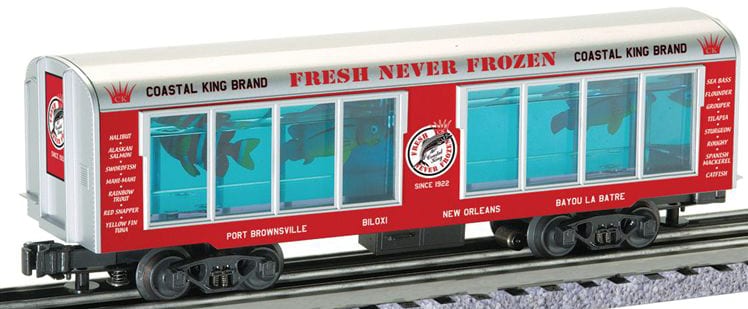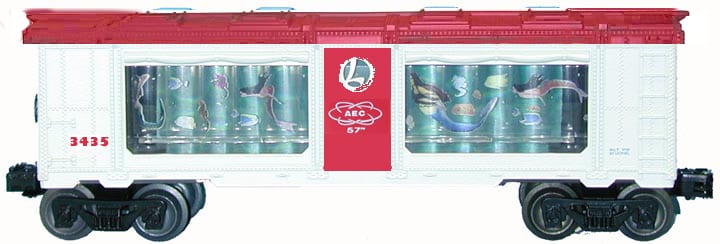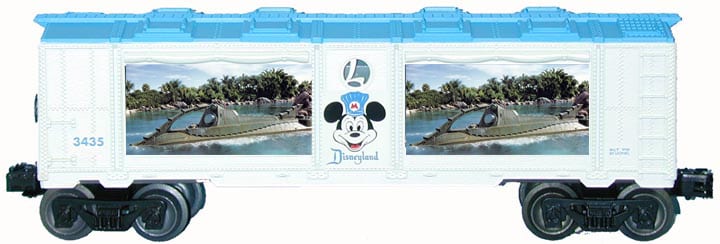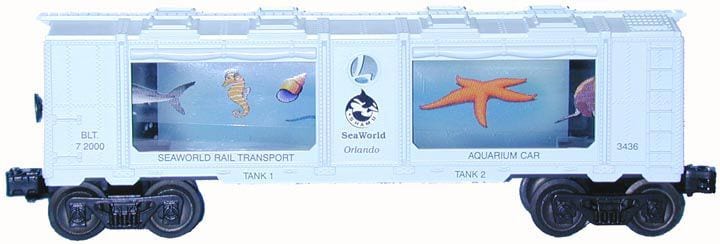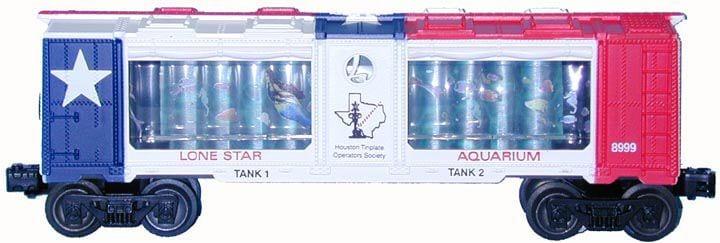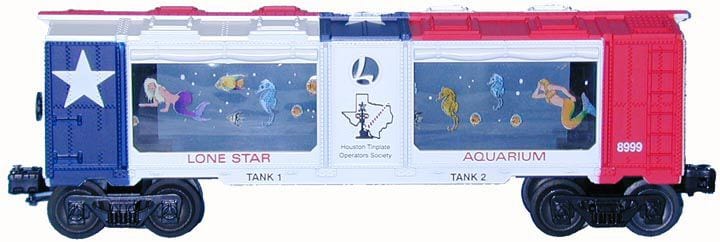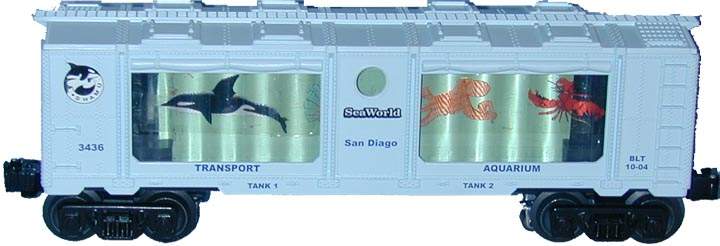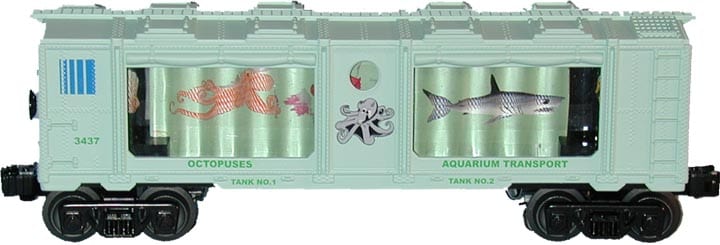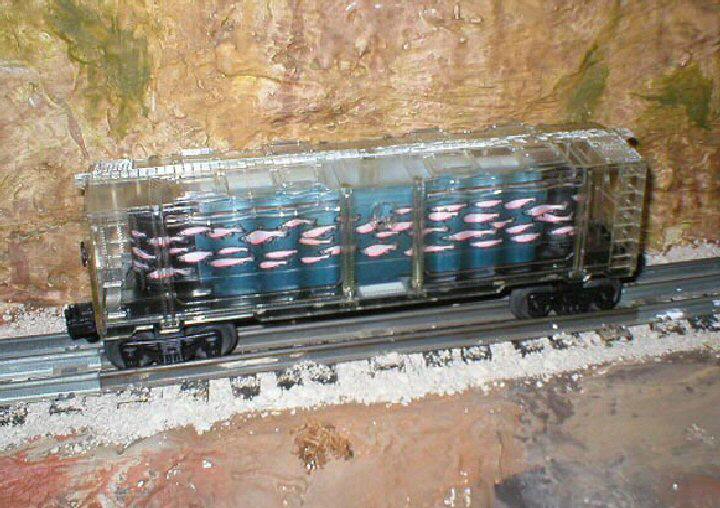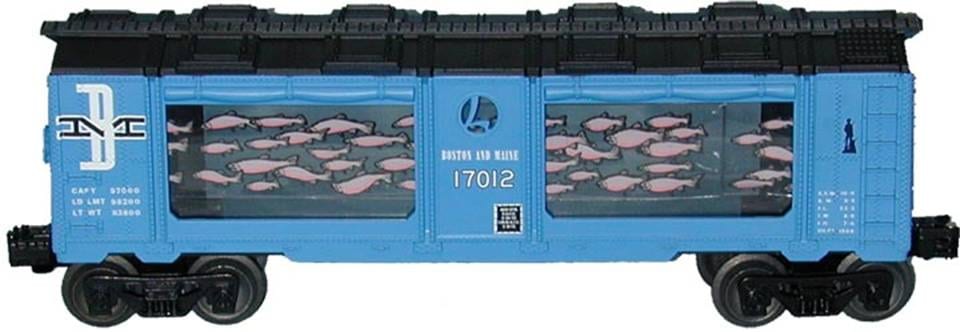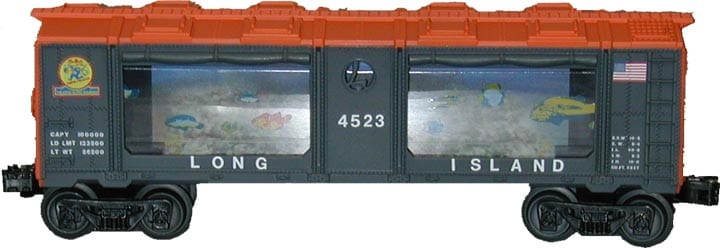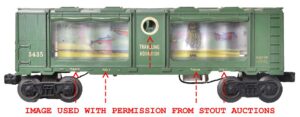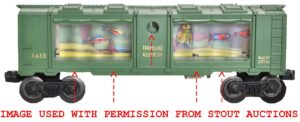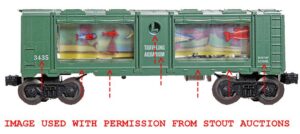Too Many Fish in the Sea: an update on Aquarium Cars
By Bob Mintz
(Updated Fall 2022)
**NEW** Here is a new Aquarium Car Chart (9/27/22)
Yes Virginia, there are real aquarium cars, and my research on this topic has unearthed two distinct types, sort of like the “Tank 1” “Tank 2” variation. This “Gold Circle” version includes two specific states, South Dakota and Wisconsin, of which the majority of research was done from their websites, as well as the U.S. Fish & Wildlife Service.
One type of aquarium car was used to ship live fish to remote parts of the country for consumer’s ultimate food consumption, while the other was used primarily to restock partially depleted streams and rivers due to excessive fishing.
The Milwaukee Road had its own fish cars that were used by commercial fishermen to ship fresh Wisconsin fish nationwide through the 1950’s.
Special thanks are required towards the Mid-Continental Railway Museum for use of their real aquarium car images.
TANK 1 Dr. Livingston Stone of the U.S. Fish Commission conducted the first experimental transport of fish by rail from the east coast to the west in 1873. In charge of 35,000 shad fry carried in open milk cans, Dr. Stone changed the water every two hours where possible in order to deliver this shipment safe and sound for planting in California. By 1879, due to this first demonstration, fish were being successfully shepherded by railcar across the nation. Shipping live cargo caused the basics of this new science to evolve. For instance, the water in fish containers required frequent aeration, and a suitable water temperature was necessary. The water needed to be kept free of slime and impurities. Adding ice to the water was very important as the colder water absorbed more oxygen and reduced the oxygen needs of the fish. It was discovered it was beneficial to confine fish a few days without food before loading them onto the fish cars. As interest in the management of streams increased, so did rail shipments of fish. In the beginning, fish were shipped in baggage cars with fish culturist attendees called “messengers”. Their task was to aerate the water and make sure their cargos arrived in sound condition. With steadily increasing traffic of fish, the Fish Commission decided in 1881 to purchase a “fish car” – baggage car specifically equipped for carrying fish. Altogether the Fish Commission in South Dakota purchased a total of ten “Fish Cars”. The first fish car was a wooden baggage car carrying live fish. Car No. 2 was fitted with special compartments to hold ice. It was reinforced so it could carry as much as 20,000 pounds of fish, water and equipment at passenger train speeds. Fish Car No. 3 not only carried fish but also hatched fish eggs while in transit. Fish Car No. 4 had cedar tanks and an air pump to aerate the water. Each car produced became more advanced than its predecessor. The fish cars generally operated from April through November and usually contained a five-man crew consisting of a captain, messengers and a cook. They traveled, ate and slept on the fish cars as they crisscrossed the country. Fish delivery service was free of charge; the recipients need only to be at the station to pick up the fish. If no rail terminus was nearby, a messenger would unload the shipment and transport it to a more convenient location. Railroads generally charged 20 cents a mile to haul the cars and their crews, and sometimes levied no charge for up to fifty percent of the annual fish car mileage. Messengers detached from shipments rode for reduced rates or at no cost. Pails and empty cans used in hauling the fish were shipped back to the Commission for free.
Car No. 7 was the first steel fish car and had twice the fish-carrying capacity of the older wooden cars. With more efficient fish cars being produced, more efficient equipment was developed also. Lightweight containers called “Fearnow” pails replaced milk cans. These containers weighed less, could carry twice as many fish as the older milk cans, took up less space, and had a special compartment that held ice to keep the water cool. Electric and jet aerators using compressed air replaced manual aeration of water in containers. By the early 1920s, fish cars had distributed 72,281,380,861 fish by traveling 2,029,416 miles and their detached messengers traveled an additional 8,104,799 miles. The last fish car, Car No. 10, was built in 1929. Its insulated compartments could hold up to 500,000 one-inch fish and it had its own generator to operate all the equipment, including the aerating devices. But the “Fish Car Era” was coming to a close. By 1932, truck transportation of fish was more economical and making an increasing impact. By 1937, modernized trucks equaled the mileage of the fish car rail fleet at a lower cost. By 1940, only three fish cars were still operating. One of the cars was wrecked in 1944. The fate of another is unknown. And the last fish car, Car No. 10, the pride of the fleet, was finally taken out of service in 1947 with its equipment scattered among various hatcheries. Fish Cars had played a key role in enriching the nation’s natural resources for 66 years when this unique way of life ended.
An early 1900s wooden passenger car has been placed at D.C. Booth. With grants obtained from the South Dakota Department of Transportation, the passenger car will soon become a replica of the original fish cars.
TANK 2 In 1881, the U.S. Fisheries Commission contracted and built specialized “fish cars” –rail cars that could transport live fish coast to coast for stocking. The Wisconsin Commissioners of Fisheries had been transporting its fish in milk cans that were stacked in standard baggage cars. By 1892 the Wisconsin Commission was shipping almost 45 million eggs, fry, and fingerling fish around the state from its hatcheries. The fish cars seemed a better means of safely shipping more fish, greater distances. In 1883, the State Legislature appropriated $5,000 to purchase a fancy fish car for Wisconsin fish stocking programs.
To transport and stock native fish throughout Wisconsin (the Badger State), the states fisheries commission was formed and purchased its first fish car, named the Badger No. 1. It went into service in the summer of 1893. The appropriation for this pricey acquisition was partly justified to carry Wisconsin live fish to the World’s Fair (the Columbian Exposition of 1893) in Chicago. It remained in use until 1914. In most years the car logged more than 20,000 rail miles delivering fish and fry where the Wisconsin rail system reached. Badger No. 1 was sold to the Canadian government and its whereabouts today are unknown.
In 1912, Badger No. 2 was purchased and used through the 1940’s. Its steel construction and sturdy design could travel on modern rail lines and the train held many more fish than its predecessor.
By the early 1930s, Wisconsin’s road system was improving and highways reached many areas of the state not served by regular rail service. The Conservation Commission purchased two new fish trucks that could each haul only half the number of fish cans as the Badger No. 2, but required less handling to stock the fish. As rail transport costs rose, more fish trucks were added to the fisheries fleet, and the end of the fish car era was in sight. In the mid 1940s, the Badger No. 2 was sold to a private railroad contractor and turned into a rolling office. In 1960, it was sold to the Mid-Continent Railway Historical Society in North Freedom, Wisconsin, where it rests today.
The original Lionel Postwar #3435 Aquarium car, made between 1959-1962, had four windows and the same motor mechanism as the #3444 cop and hobo car except that it used 35mm film vs. the cop and hobo’s 16mm film. To make the transition to the future, Lionel even made a holographic-type image aquarium car #16750. If you look closely, the fish’s eyes will even follow you! Perhaps one day in the not too distant future, we can expect Lionel to make a digital movie aquarium car. The #3435, as well as several of its’ successors, had undulated plastic windows to give the appearance of water movement.
The aquarium car mold was later adapted for use in the manufacture of the body of the #6445 Fort Knox car, commonly referred to as the mint car.
The #3435 has a switch on the bottom that would activate the action of the fish swimming by the windows. This would enable you to have “action”, even while the boxcar was sitting stationery with the power to the tracks on. Later versions would only use a gear system attached to the trucks for motion.
The #3435 had several variations. The most common had yellow lettering and an “L” between the two windows. An uncommon version had yellow lettering and “Tank 1” and “Tank 2” written under the windows. Yet another type had gold leaf lettering instead of yellow, and there were 3 different types within this category: a gold circle around the “L” and the words “Tank 1” and “Tank 2”; no gold circle around the “L” but the words “Tank 1” and “Tank 2”; and the gold circle around the “L” but no words under the windows. Whew!
Several of the re-issue aquarium cars pay homage to the original Postwar version #3435 by including this number on the car and one even tried indirectly, a sort of left-handed compliment, by using the #3436 instead.
An actual accessory for this car was issued to “go with” these pieces of rolling stock, similar to the #32998 Lionel/#14133 Madison Hardware Operating Hobby Shop accessories and the Display Cars #19671 and #19675. Keeping consistent with the Mint car series, #18300 Pennsylvania GG-1 electric Gold (actually bronze) engine and matching #19702 Pennsylvania N5C caboose, I feel that a matching engine and caboose to the #26745 aquarium car and #14105 building would look great in that tri-color scheme. Perhaps Lionel will even make an operating Mint car building someday???
Todd Wagner of Lionel, are you listening/reading?
From Dr. Paul Wassermann:
“This past June at the Seattle National Convention, my wife Irene was fortunate to win the table prize at the banquet held for the Board of Directors and selected guests of the Pacific Northwest Division. The banquet was held at the Seattle Aquarium (after closing hours). Although just a redecorated Lionel 6-16742 Gil Finn’s Trout Ranch car, it was a very coveted prize. I have no idea how many were made, I would guess about a dozen given away at the dinner.”

Some of you may be aware of the changes at Lionel surrounding their production of the K-Line brand. The 2010 Kid’s Club car – the Phillips Aquarium car was designed using K-Line tooling. However, this tooling is no longer available. Lionel offered to replace this car with a genuine Lionel Aquarium car that will include the same Phillips graphics as the original. This car will include “swimming” fish (and Maryland crabs!) on a circling interior belt, die-cast metal trucks, operating couplers, an on/off switch for the motor and interior lighting. This model is also less expensive than the original. Jim Marski modified the original artwork from the K-Line by Lionel car to fit the Lionel Aquarium Car bodywork.
Occasionally something odd turns up as we review old documentation — cars issued SKU numbers by Lionel, but never manufactured. In such cases, one must use some imagination:
No article of mine would be complete without referring to third-party vendors and this one will be no exception.
The #3436 car was spotted at the LCCA/LOTS Dearborn convention in the summer of 2000.
There are three versions of the HTOS Aquarium car due to purchase of various and sundry aquarium shells and bodies.
Yet another variation of the #19884 was seen at a Greenberg train show here on Long Island.
All of the following were done by RGS Limited Editions.
I just can’t seem to stop myself. Will someone, anyone, a friend perhaps, create an intervention and get me into a 12-step program immediately?
Help, I’m drowning!!!
But still lovin’ it.
From the paintbrush of John Trotta:
| VARIATION | GOLD | YELLOW | WHITE | TANK 1/ TANK 2 | CIRCLE | HEAT | RUBBER |
| LETTERING | LETTERING | LETTERING | DESIGNATION | “L” | STAMPED | STAMPED | |
| A | X | X | X | X | |||
| B | X | X | X | ||||
| C | X | X | |||||
| D | X | X | |||||
| E | X | X |
VARIATION (A)
VARIATION (B)
VARIATION (C)
VARIATION (D)
VARIATION (E)

